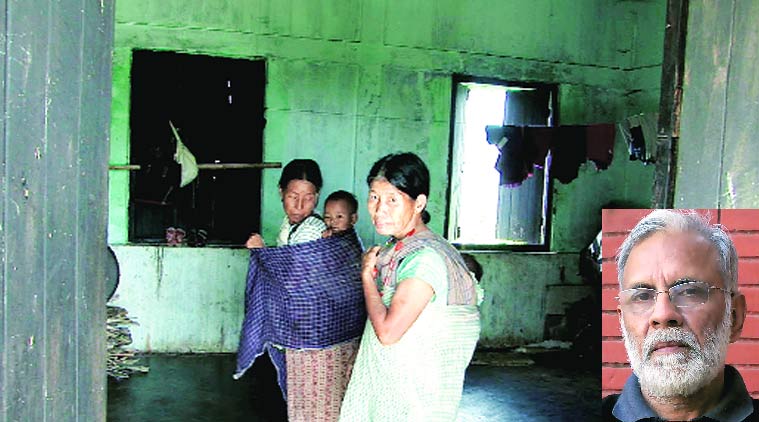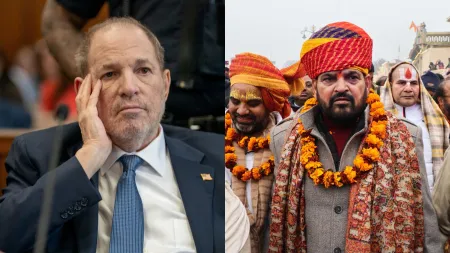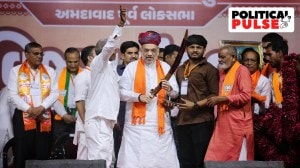- India
- International
A Life in Conflict
Documentary filmmaker Pankaj Butalia on completing Assam: A Landscape of Neglect.
 (Right) Pankaj Butalia; stills from his latest documentary.
(Right) Pankaj Butalia; stills from his latest documentary.
Somewhere along the new six-lane national highway 37 between Guwahati and Nagaon falls an area called Nellie. There is no pucca road that leads up to this cluster of villages off the main highway in Assam. No surprise, since it holds a dark past — close to 3,000 villagers according to official estimates were massacred within a span of six hours on February 18, 1983, as a price for voting in the Assembly elections, a few days earlier.
This section of the road becomes a key part in documentary filmmaker Pankaj Butalia’s latest film called Assam: A Landscape of Neglect. “This road is part of the ‘Look East’ policy of the Indian government. In doing so, these small places have been boxed out of the main link. For me, it means obliterating the occurrence of this incident from public view,” says Butalia, whose film is the third in a trilogy of conflict films.
The film looks at the reasons behind the ethnic clashes in the state of Assam over the past three decades. It approaches this idea from the point of view of the tribal groups living across the state that form the ethnic diversity of its lush green landscape. “I am looking at issues, which nobody is talking about and the voices that are not easily accessible,” he says. The film was screened last weekend at the India International Centre.
The 65-minute film starts in the Korbi dominated areas of south Assam where lakhs of villagers have been displaced due to ethnic conflicts. They had to leave behind their fields, where they grew jute, brinjal, ginger, among other vegetables, which was their main source of income. Now they squander their lives on less fertile tracts of lands, in refugee camps and government accommodations. “Everyone had their own demands. I am just putting across their point of view. After hearing them, one realises that the truth is something entirely different. I am simply stating that there is something going on in Assam and the way we are dealing with the state needs to be reviewed again,” says the 65-year-old, who shot the film during between September 2009 and April last year.
The filmmaker was assisted by local guides who spoke the different ethnic dialects in the region. Moving from Guwahati to Nagoan to the Korbi areas, Haflong and then to Dibrugarh, Butalia also spent considerable time in the Bodo-dominated areas. The film consciously keeps out life in developed cities and towns in Assam, like Guwahati, because, “the city has a separate dynamic and the idea of my film would have gotten diluted ”. In the film, we are shown life in the refugee camps where the local government provides food and shelter and a different way of life in the ULFA-operated areas.

Butalia started his trilogy with Manipur Song, in 2010, which looked at the fight between the Manipuri people and the state to ascertain their identity. It was followed up by Texture of Loss in 2012, which showed the years of conflict and its toll on people. His latest film looks at the marginal voices, which call for an independent state in Assam.
Going by previous experience, Butalia does not want a commercial release of this film. For Texture of Loss, the filmmaker faced flak from the Censor Board and the Film Certification Appellate Tribunal over the “lack of a balance” in the film. “I don’t need a certificate if I hold private screenings where not more than 200 people will attend. I want to challenge the censorship criteria of films,” says Butalia, who intends making the trilogy available for private screenings on DVD, sometime this year.
Photos
May 06: Latest News
- 01
- 02
- 03
- 04
- 05







































